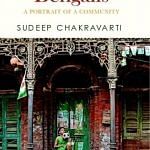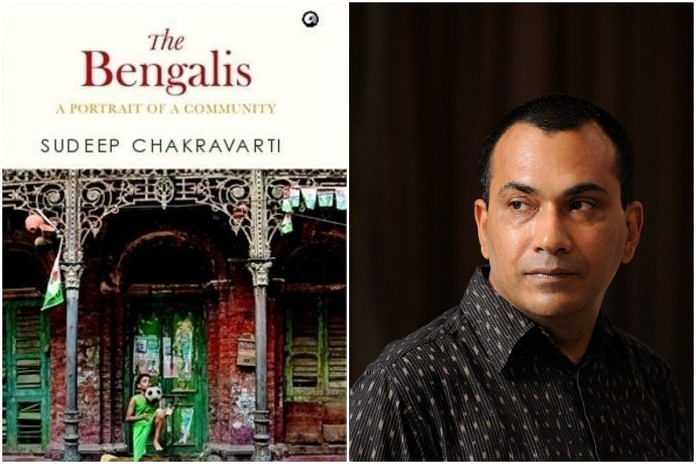Sudeep Chakravarti’s mammoth undertaking to trace the Bengalis from its genesis to now results in a detailed, intriguing, and confounding book.
Sudeep Chakravarti’s book The Bengalis: A portrait of a community, manages to do two new, and some may call rare, things. First, it talks about all Bengalis- the bourgeois and the poor, the Hindu and the Muslim, the East and the West under and as a single entity- the Banglasphere. Which is somewhat rare considering that many books on and by Bengalis only end up romanticising itself.
Second, and most importantly, it criticises the Bengalis, it acknowledges the chip they have on their shoulder, and restrains itself from complete idealisation of the said community.
Chakravarti’s epilogue to the book is a fascinating text in itself that addresses this dichotomy: “We [Bengalis] are worthy of every cliché… We are at once lovers of poetry and despoilers and killers of children, women and men. At once renaissance people and ravagers of history.”
Does it mean that the book does not romanticise them? No, it does. But as a Bengali, living out of Bengal, I will acknowledge, that it does tug at my heartstrings, it does feed into the fantasies of returning home.
Here Chakravarti, addresses another Bengali community: the ones living outside the ‘promised land’- also known as the ‘probashi’ Bengali. More often than not, probashis are characterised by an even more determinedness to prove its Bengali roots- in whose stories Bengal ( and sometimes just Kolkata) achieves an almost mythical reincarnation with no faults.
However, the Banglasphere is never a utopia, which Chakravarti aptly points out. Bengali hindus regurgitate an upper caste projection of Bengal- a class of superior, educated, modern people. “For all their claim to progressive thoughts and actions, Bengalis, especially Bengali hindus, are obsessed with race and racial superiority,” writes Chakravarti.
Chakravarti talks about the fierceness with which Bengalis create superficial divisions. For the Bengalis, all unlike itself are clubbed under the umbrella term, ‘non-Bengalis’ or ‘Obangalis’ be it the Birlas, Goenkas, Tatas who generate capital for West Bengal, or the many communities that migrated to Kolkata and form an integral part of the city.
These sad ‘cultural’ distinctions are not only reserved for the outsiders, but between classes and geography too. “A great part of being Bengali is to be aware of what we are not,” says Chakravarti in the chapter on the Obangali. The book addresses the rivalry Bengalis project vis-a-vis the Assamese, the Biharis, and the Odiyas.
Historically, Chakravarti traces that the Bengali people are really just ‘mongrels’ who settled on a fertile land. However, the downfall of the book would be that he himself leaves out many communities that settled on this land while explaining the Bengalis. The book does not delve too deeply into the histories of other settlers in Bengal- the Chinese, Jains, Baghdadi Jews, Marwaris, Sikhs, and Gujratis.
The Bhadralok phenomenon, as I like to call it or as the Bhadralok utopia as Chakravarti likes to, is a detailed undertaking in The Bengalis. The ‘Bhadralok’ (literally, gentleman) is the personification of everything upper- caste, class, education, thought, social circles. One hears that if you walked into the College Street Coffee House in its heyday you could pry into conversations ranging from Andre Bazin to Shakespeare.
But away from the fancy name droppings, lies a grim truth and a bloody history. The Partition on the Bengal side and its brutalities aren’t as vastly documented or known, as that on the Punjab side. Chakravarti attempts to address this and the tension between the Hindu Muslim communities that exist even though it is brushed under the carpet often.
He documents the difficult position of Gandhi when he travelled to Bengal in the aftermath of the Great Calcutta Killings. Hindus saw him giving too much to Muslims, the Muslims saw him as pro-Hindus, and (some) Bengalis loathed him for sabotaging Bose. The Bangladesh Liberation war and its history is drawn up by Chakravarti too.
Though the long historical narratives may seem monotonous and seem like the author is rambling on, he often attempts to intersperse it with the personal. How these tremendous happenings in history affected a family, or language, or personal journeys.
No book on the Bengalis is complete without mentioning food. Food that is an interesting confluence of different cultures, as well as something that makes Bengalis salivate no matter where on earth they may be. A friend in the tourism industry, once told me that, Bengalis and Punjabis are among the worst tourists in India. Both would like what they eat at home to be served, no matter where they are traveling.
Chakravarti talks about the disconcerting habit of Bengalis to do two things: ask ‘ki kheli’ (what did you eat) on every occasion, and second, praise a good meal by comparing it to another excellent meal they had in the past. That is the highest compliment.
It’s worth noting that the chapter on food isn’t tone deaf or just humorous. It addresses the many devastating famines Bengal has seen and suffered through, and the horrific scars it left on the collective memory.
One must accept that to those not familiar with Bengal, the book may seem confusing, alienating at certain points, the chapter sequences may seem jarring, and the language unwelcoming, which is where the weakness of the book lies. Though it attempts to be for all, it ends up being a book by and for the Bengalis.
I would like to quote a significant paragraph that stood out for me and in a sense sums up the community it talks about:
“We [Bengalis] are… haters of colonialists, lovers of colonialism… creators and perpetuators of the most vicious gangs and political gansterism…vastly literate, vastly illiterate… sufferers of the greatest famines… fanatical about food… we are confounding.” As is the book.

‘The Bengalis: A Portrait of a Community by Sudeep Chakravarti’ has been published by Aleph Book Company.



